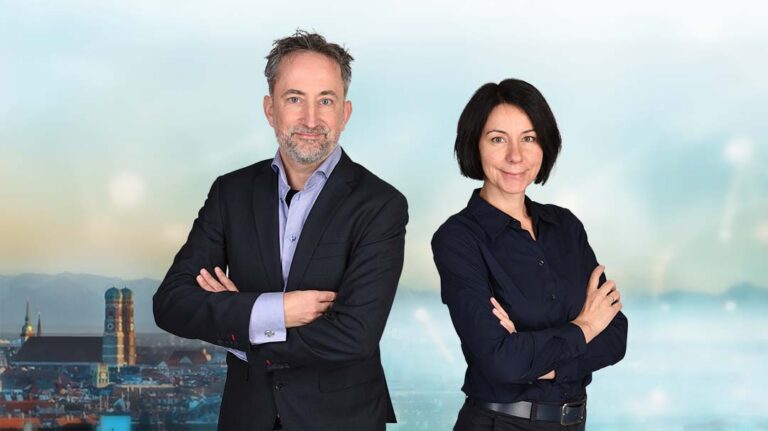Photo: Ulrich Buckenlei | ABBA Museum Stockholm
At the ABBA Museum in Stockholm, real stage presence meets digital projection. The exhibition shows how holography and avatars make memories visible and open up new experiential spaces.
At the same time, it becomes clear that technology alone is not enough. What matters is the curated combination of storytelling, interaction, and responsibility.
The following overview classifies technology, law, and practice and shows how museums and companies can shape these experiences meaningfully.
Holography Meets Live Performance
At the center is the interplay between real performers and digital doubles. Projections and avatar stagings extend the stage without replacing it.
- Increased Presence → Digital layers enhance live interaction.
- Curated Storytelling → Dramaturgy guides technology, not the other way around.
- Audience Perspective → Closeness arises through comprehensible staging.

A dialogue emerges on stage between real performance and holographic projection.
Photo: Ulrich Buckenlei | ABBA Museum Stockholm
Technology Behind the Effect
The illusion relies on precise technology: high-resolution projection, volumetric video, motion capturing, and AI-supported audiovisualization. Only the seamless interplay creates credibility.
- Volumetric Data → Spatial capture instead of flat projection.
- Real-Time Rendering → Movements, light, and perspective remain consistent.
- Audio Synchronization → Voice, music, and visuals merge seamlessly.

Behind the stage: projection, tracking, and rendering create a coherent presence.
Photo: Ulrich Buckenlei | ABBA Museum Stockholm
Legal and Ethical Classification
With technical feasibility comes responsibility and due diligence. Copyrights, personality rights, and licenses must be clarified, especially in the case of historical recordings or posthumous representations.
- Copyright → Secure licensing for the use of works, images, and audio material.
- Personality Rights → Consent and handling of avatars of real people.
- Context Preservation → Respect for the work, biography, and curatorial intent.

Behind the stage: projection, tracking, and rendering create a coherent presence.
Photo: Ulrich Buckenlei | ABBA Museum Stockholm
Interaction and Learning in the Museum
The exhibition demonstrates how interactive elements make knowledge tangible. Visitors shift from observation to participation, making memories vivid and content comprehensible.
- Participation → Visitors become active co-creators.
- Didactics → Content is conveyed step by step and contextually.
- Accessibility → Access through multi-channel interaction and clear UI.
![]()
Interactive installations for events and brands
Illustration: Visoric GmbH
Transfer to Business and Education
The principles can be applied to training, brand communication, and service. The key is integration into processes and clear objectives, not technology as an end in itself.
- Training & Safety → Rehearse scenarios without real risks.
- Product Communication → Make functions tangible in spatial context.
- Service & Support → Remote assistance through avatars and AR hints.
![]()
AR mirror with life-size avatar
Visualization: Visoric GmbH
Insights in Video
The sequences shown were recorded at the ABBA Museum and serve to contextualize current forms of staging. Recordings and narration: Ulrich Buckenlei; usage within Education & Commentary.
- Situational Impressions → Spatial impression, visitor flow, staging.
- Detail Observation → Transitions, eye guidance, timing.
- Reflection → What can be transferred to other contexts?
Video still: impressions and analysis of the staging at the ABBA Museum.
Video & Photo: Ulrich Buckenlei | ABBA Museum Stockholm
Perspective and Implementation
Holography and avatars expand stages, exhibitions, and learning environments. For possibilities to become convincing experiences, interdisciplinarity and care are essential.
Experience shows: effective projects combine curatorial clarity, technical precision, and legal integrity. This is how stagings with lasting impact are created.
- Sharpening the Use Case → Define goals, target groups, and impact.
- Prototyping & Testing → Evaluate impact early and validate assumptions.
- Scaling → Ensure operation, rights, maintenance, and quality.
Staying in Dialogue
Those who want to concretize their projects in holography, avatars, and spatial staging benefit from experience in concept, production, and operation.
The expert team at Visoric in Munich supports you from idea to real-world application – knowledgeable, pragmatic, and goal-oriented.
- Analysis & Consulting → Clarify requirements, evaluate options.
- Visual Prototypes → Make ideas visible and refine them iteratively.
- Implementation → Reliably integrate content, technology, and processes.
We look forward to professional dialogue.
Feel free to contact the Visoric team.
Contact Persons:
Ulrich Buckenlei (Creative Director)
Mobile: +49 152 53532871
Email: ulrich.buckenlei@visoric.com
Nataliya Daniltseva (Project Manager)
Mobile: +49 176 72805705
Email: nataliya.daniltseva@visoric.com
Address:
VISORIC GmbH
Bayerstraße 13
D-80335 Munich


